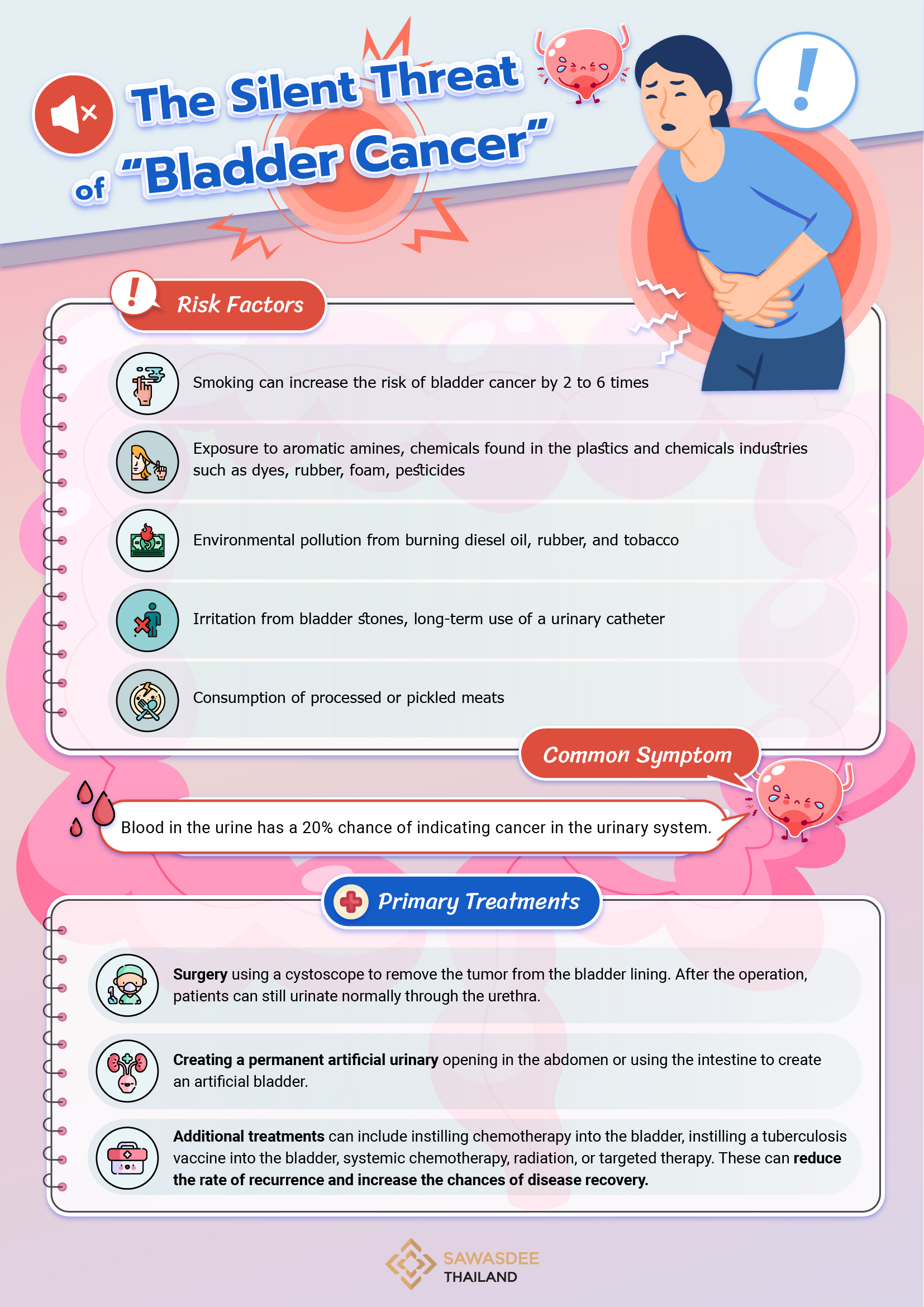
"Bladder cancer" is a silent and close threat whose exact cause is still unclear. Although it is not frequently found, the mortality rate is relatively high, especially in males. Early detection allows for complete recovery. According to the latest data from the National Cancer Institute (Cancer in Thailand Vol.10 2016-2018), 2,497 new cases of "bladder cancer" are reported each year, averaging 7 cases per day. This represents 2% of all cancers, and is found in males 3 to 4 times more than in females. Bladder cancer has a high mortality rate of nearly 20%. Early detection and treatment can reduce this mortality rate. The most common initial symptom is hematuria, especially in cases where no discomfort or burning during urination is present. If the cancer progresses, symptoms may include minor abdominal pain, chronic urinary tract infections, weight loss, swelling of both legs, and difficulty or reduced urination.
Specialist urological oncology surgeons at the National Cancer Institute note that the most significant risk factor is smoking, which can increase the risk of bladder cancer by 2 to 6 times. Other risk factors include exposure to aromatic amines, chemicals found in the plastics and chemicals industries such as dyes, rubber, foam, pesticides, and environmental pollution from burning diesel oil, rubber, and tobacco. Other contributing factors include irritation from bladder stones, long-term use of a urinary catheter, and consumption of processed or pickled meats.
The most common symptom is blood in the urine, which has a 20% chance of indicating cancer in the urinary system. The primary treatment is surgery using a cystoscope to remove the tumor from the bladder lining. After the operation, patients can still urinate normally through the urethra. However, if the bladder cancer is widespread and has spread to the muscle layer of the bladder, treatment involves removing the bladder and adjacent lymph nodes. This is followed by creating a permanent artificial urinary opening in the abdomen or using the intestine to create an artificial bladder. Additional treatments can include instilling chemotherapy into the bladder, instilling a tuberculosis vaccine into the bladder, systemic chemotherapy, radiation, or targeted therapy. These can reduce the rate of recurrence and increase the chances of disease recovery.
